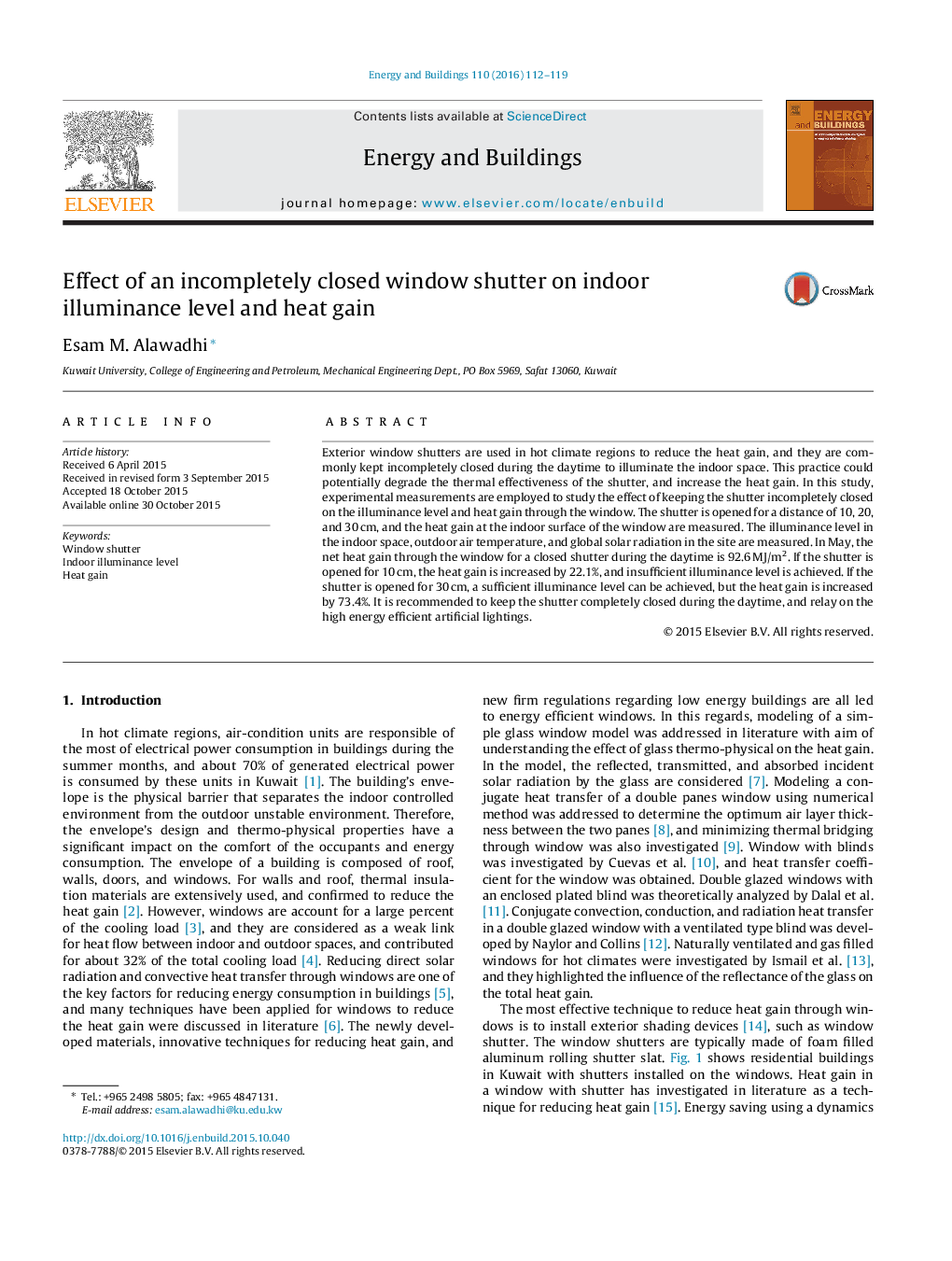| کد مقاله | کد نشریه | سال انتشار | مقاله انگلیسی | نسخه تمام متن |
|---|---|---|---|---|
| 262264 | 504023 | 2016 | 8 صفحه PDF | دانلود رایگان |
• Window shutters are used to reduce the heat gain.
• The shutter is incompletely closed to illuminate the indoor space.
• Opening the shutter for a small distance will insufficiently illuminate the indoor space.
• Sufficient illuminance level can be achieved with large opening distances, but with a huge heat gain.
Exterior window shutters are used in hot climate regions to reduce the heat gain, and they are commonly kept incompletely closed during the daytime to illuminate the indoor space. This practice could potentially degrade the thermal effectiveness of the shutter, and increase the heat gain. In this study, experimental measurements are employed to study the effect of keeping the shutter incompletely closed on the illuminance level and heat gain through the window. The shutter is opened for a distance of 10, 20, and 30 cm, and the heat gain at the indoor surface of the window are measured. The illuminance level in the indoor space, outdoor air temperature, and global solar radiation in the site are measured. In May, the net heat gain through the window for a closed shutter during the daytime is 92.6 MJ/m2. If the shutter is opened for 10 cm, the heat gain is increased by 22.1%, and insufficient illuminance level is achieved. If the shutter is opened for 30 cm, a sufficient illuminance level can be achieved, but the heat gain is increased by 73.4%. It is recommended to keep the shutter completely closed during the daytime, and relay on the high energy efficient artificial lightings.
Journal: Energy and Buildings - Volume 110, 1 January 2016, Pages 112–119
